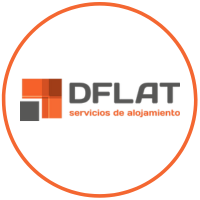The proximity to the university district makes Moncloa the preferred one, mostly by students, when looking for accommodation in the city.
Get to know Moncloa, the district in Madrid
What to see in Moncloa District
We would like to highlight the street “Calle Princesa” in this neighborhood, where a large number of stores can be found, as well as “Calle Quevedo”, which has several cinemas.
In this district, we can find many green areas, and the most known among them is “Casa de Campo” with 1.535 hectares, designated as the largest public park in Madrid. “Casa de Campo” is a natural space and has been declared an asset of cultural interest in the category of historic site. In Casa de Campo Park, there are various facilities, such as the Amusement Park, the zoo, or the cable car.
Also, as points of interest inside the park, “Rosales” and the “Temple of Debod” must be named.
They are highly recommended places for walking and for carrying out a multitude of activities on weekends.
The district is very well connected, thanks to the Principe Pio station and the Interchanger.

Temple of Debod
Moncloa’s Architecture
The Moncloa district is characterized by buildings dedicated mainly to residential areas, since the district didn´t appear as such until the 1980s.
In addition to the residential buildings, a large number of relevant buildings and monuments inaugurated in the 20th century should be mentioned.
One of the most emblematic between them is the Junta Municipal de Moncloa-Aravaca´s building, designed by the architect Manuel Herrero de Palacios in 1949. The construction was not completed until the 1960s.
At first, it was intended to be a tribute to those killed in the civil war, hence its appearance as a mausoleum, but at the end, it was used as the building of the Municipal Council of Moncloa.
Other important buildings or monuments are: the Cuartel General del Ejercito del Aire with a neo-Herrerian style; the Arco de la Victoria with a height of 40 meters; the Lighting Tower, better known as Faro de Moncloa, with a height of 110 meters; the Museum of America; the Casa do Brasil with a style used in the Brazilian capital; and the Complutense University of Madrid.
Moncloa’s growth
The origin of the district dates back to the 1980s, after merging with the old municipality of Aravaca and some neighborhoods of Madrid, such as the neighborhoods of Valdezarza or Valdemarín.
Moncloa is the third-largest district in Madrid; the neighborhood is not as united as other districts of the capital since some of them are separated by the M-30 highway.
About Moncloa neighborhoods
Moncloa district has approximately 118.000 inhabitants. It is made up of seven neighborhoods: Casa de Campo, Argüelles, Ciudad Universitaria, Valdezarza, Valdemarín, El Plantío, and Aravaca.
This district is limited to the north by Puente de Castilla and to the west by Pozuelo de Alarcón. To the east is Cuesta de San Vicente, and to the south is the Extremadura highway.
It´s strategic location at the exit of A6 makes Moncloa the second most demanded area.
What else to visit near Moncloa District
You are in the Moncloa area, and it will be easy for you to visit the Sorolla Museum in Chambery or the Almudena Cathedral
From this location, you can start the post about visiting Madrid in one day. However, you might also be interested in some tips for your first visit to Madrid or a few other places you should not miss on your second visit to Madrid.
Where to stay in Madrid | Our Accommodations
If you are looking for a place to stay near the district, please take a look at our accommodations in Chamberí or Centro.
If you are a landlord or investor, you can include your accommodation in our list of apartments for companies or a list of apartments for students.


